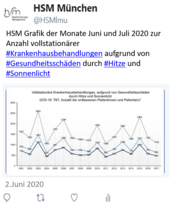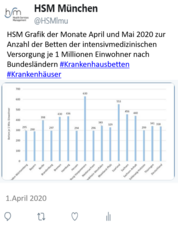Amenable Mortality in Germany: Spatial Distribution and Regional Concentrations
| Authors/Editors: |
Sundmacher, L. Kimmerle, J Latzitis, N Busse, R |
|---|---|
| Publication Date: | 2011 |
| Type of Publication: | Articles in Refereed Journals (National) |
| ISBN/ISSN: | 0941-3790 |
| erschienen in: | Das Gesundheitswesen |
| Weitere Quellenangabe: | Volume 73(4), Pages 229-37 |
Abstract
Aim
The aim of this study is to identify small areas in Germany burdened by exceptionally high rates of amenable mortality using the 439 counties as unit of analysis.
Methods
To overcome shortcomings of conventional mortality measures, we construct an indicator for amenable mortality (AM) which captures deaths that should not occur given current medical knowledge and technology. We age-standardize individual-level data on mortality for the years 2000–2004 and plot the distribution of disease-specific AM on country maps. We consider deaths following ischaemic heart disease, cerebrovascular diseases, hypertension, diseases of the liver, traffic accidents, several cancer types and 24 other diseases that are classified as amenable to health care. The data is taken from the causes-of-death statistics (provided by Destatis).
Results
AM significantly differs between small areas within and between German federal states (Bundeslaender). Breast cancer and lung cancer in men are the most common AM-causes in Germany. The often discussed mortality-gap between East and West Germany is predominantly driven by differences in amenable deaths following cardiovascular diseases. However, the maps of most carcinogenic deaths show a north-south gradient rather than an east-west difference.





